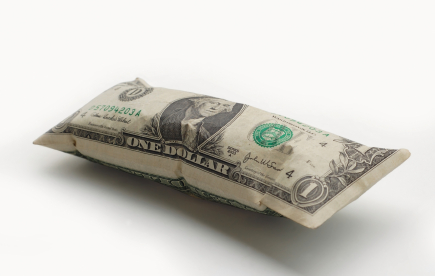Lending money to the world’s biggest debtor has scarcely ever been more popular or less rewarding. This week, the yield on 10-year Treasury notes fell below 3.8%. Meanwhile, officially, consumer prices are rising at 5.6% per year. Producer prices in the U.S. were last clocked going up at almost 10%.
Bond investors are supposed to be the smartest of the lot. But there are times when the first become the last. This, we believe, is one of those times.
Between what bond investors stand to gain in yield and what they stand to lose from inflation is a built-in loss of 1.8%. Where’s the margin of safety? Where’s the upside? Why bother? Bond investors are betting that the future stretches out before them just like the past. They need to turn their heads around. Looking in the mirror, they see only the straight road behind them…but not the hairpin curve a quarter mile back. It was just such a turn that flipped them over 26 years ago…and 36 years before that…and 26 years before that. The wrecks seem to come along about once per generation. Interest rates went down for more than a quarter century…then up from 1946 to 1982…then down again.
Here, we are lured to a flagrant guess. We wouldn’t be the first to notice that it takes about as long for a major turn in the credit cycle as it takes for a man to forget the last one. And we won’t be the only ones to guess that, having forgotten the crackup of the ’80s, bond investors are ready for another one. Major turns in the credit cycle mark Biblical turning points in investors’ fortunes. The meek stock and bond investors of ’82 inherited the world by 2000. Now it is their turn to be half-wits.
In most investors’ minds, life on Earth began on this month 26 years ago. In that hazy soup of a summer, you were considered foolish if you lent money on any terms to anyone. For a simple reason: The money you got back would be worth less than the money you lent out. They had their roadmaps. They knew that Deficit Alley came out onto the street known as “inflation,” which led directly to Bear Market Highway. In the preceding 10 years, the dollar had lost nearly two-thirds of its purchasing power. A bear market on Wall Street, combined with inflation, had taken 80% off the value of U.S. stocks, and there was hardly a bond investor still compos mentis who did not regret ever laying eyes on U.S. Treasury paper.
For those bond investors of the early Volcker years, the road behind them had been bad enough; they were sure the road ahead led right to Hell. But by the dog days of August, everything they thought they had learned in the preceding decades was not worth knowing; soon, the first would be coming in last. Few realized it, but the bear market in stocks that began in 1966 ended that very summer. The bull market in bond yields was over, too. Consumer price inflation was falling from a high of more than 10% per year—the index actually hit more than 14% during the month of March 1980—down to under 4% by 1984. Bond yields would follow, as investors gradually and reluctantly backed up and turned around.
The pileup of the early ’80s widowed commodities and orphaned gold. But in the next straightaway, stocks and bonds were as readily adoptable as a blond-haired boy. By the late ’90s, nobody didn’t want them. The Dow rose 11 times. Bond prices rose, too, as yields fell. And gradually, the roadmaps of ’82 were redrawn. What everyone knew for sure then, they know now was not so. And what everyone knows for sure now is the very thing they knew was false 26 years ago. George W. Bush will leave office with a deficit that would have staggered the generation of ’82—around $500 billion. But investors know now that “deficits don’t matter.” They expect the dollar to rise and bond yields to fall anyway. Don’t count on it. Every generation of automobiles has to find its own way to the scrap heap. And every generation of investors—even those with GPS on the dashboard—has to find its own Deadman’s Curve.

